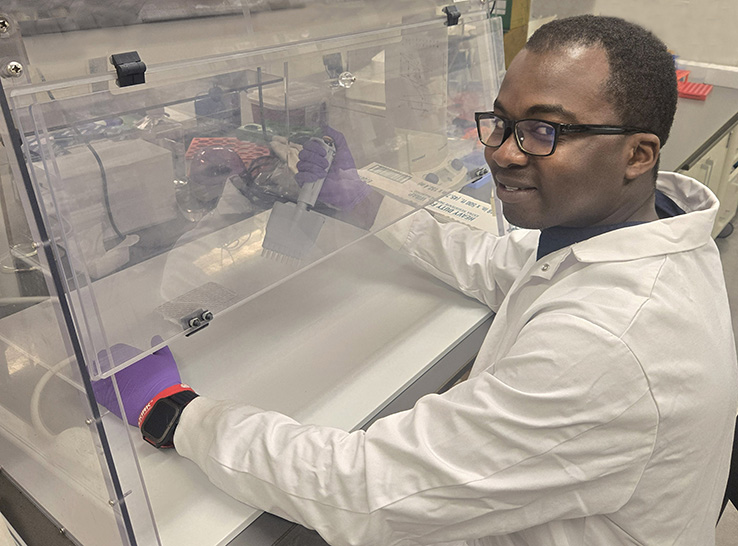Major poultry buyers are shifting from “raised without antibiotics” to “no antibiotics important to human medicine” (NAIHM), signalling a renewed focus on the future of coccidiosis management.
Greg Mathis, PhD, Southern Poultry Feed & Research Inc., believes the future involves finding ways to preserve the efficacy of widely used products, some of which have been around for half a century.
The average USDA-approved anticoccidial feed additive is approximately 50 years old, Mathis told an audience at the 2024 Delmarva Chicken Association 59th National Meeting on Poultry Health, Processing and Live Production.
With a lack of new options coming into commercial use, and companies such as McDonald’s and Chick-fil-A making a strategic move to embrace NAIHM, it has become ever-more pivotal to increase the longevity of anticoccidial products on the market, particularly ionophores, which are classified as antibiotics but not used in human medicine.
There are 12 FDA-approved anticoccidial drugs, five of which are considered antibiotics in the US, leaving seven for “no-antibiotics-ever” producers. These 12 drugs are safe and effective and cover a broad spectrum of activity against coccidiosis-associated species, Mathis explained.
However, this selection of options is limited, and many of the drugs are very old. There is also the chance of drug resistance, which can be more pronounced the stronger the product.
“What we can really do in the future is continue to do rotation shuttles using sensitivity data to manage these 12 anticoccidials that we have,” he said.
Ionophore focus
Ionophores can do more than control Eimeria parasites associated with coccidiosis. Research has shown that Clostridium perfringens is uniformly sensitive to ionophores.1
As opposed to conventional antibiotics, ionophores are considered “decreased sensitivity”: although resistance is possible, it is difficult to develop, and there is no scientific consensus on the biological mechanisms behind the cases of resistance that have been recorded.
Anticoccidial resistance usually arises by the selection of preexisting mutant Eimeria, Mathis said. He described several approaches to address this problem:
- Increase the concentration of the anticoccidial. This may temporally reduce the problem but, with certain anticoccidials, could speed the development of resistance.
- Implement rotation or shuttle programs that introduce anticoccidials with different modes of action.
- Conduct rotation or shuttle programs using products, such as Maxiban (nicarbazin/narasin), that are a combination of anticoccidials.
Unknowns remain about almost any approach, he said, partly due to extensive use of all anticoccidials. This overuse means there is a lack of baselines to compare to and limited data on how the use of combinations of products affects the efficacy of each singularly.
It has been known since the early ’90s that sensitivity to ionophores can be restored by vaccinating birds against coccidiosis.2 However, he advised against conducting sensitivity testing after a farm has switched to the vaccination stage of its coccidiosis-control program, which often happens at the beginning of summer, because “all you’re going to test are vaccine strains.”
Different approaches, different sensitivity
To investigate the sensitivity to ionophores of Eimeria from farms with different coccidiosis-control protocols, Mathis carried out studies using isolates from three farms:
- Farm #1: never used an ionophore.
- Farm #2: continuously used ionophores without a vaccine.
- Farm #3: moved to a raised-without-antibiotics program, and thus hadn’t used ionophores in several years.
He experimentally infected birds with equal challenges of E. acervulina, E. maxima and E. tenella and tested the impact of using no medication, chemical anticoccidial medication and ionophores on feed conversion and average lesion scores.
For farm #1 (no previous ionophore use), ionophores compared favorably to even the best-performing chemical anticoccidials regarding feed conversion, he explained, and demonstrated good efficacy against lesions.
Analyzing isolates from farm #2 (continuous ionophore use), Mathis observed that the ionophores did not perform as well as the chemicals, evidenced by higher feed-conversion and lesion scores (albeit lower than the nonmedicated treatment). This finding highlighted the reduced ionophore sensitivity of the isolates.
When testing the isolates from farm #3 (raised without antibiotics), he noticed that the efficacy of products was similar to that at farm #1, with ionophores generally outperforming chemical options.
Value of alternative options
Beyond the FDA-approved list of products, there are many alternatives for use in feed that fall into the category of “generally recognized as safe,” Mathis explained. These include yeast cell walls, probiotics and organic and inorganic acids, as well as phytoceuticals, which are plant-based products that have activity in biological systems.
He pointed to phytoceuticals, including essential oils, saponins and tannins, as useful alongside drugs or as a means of modulating coccidia cycling with vaccination.
“There is a lot of variation in performance, and I could give a whole talk on that,” he said. “But generally speaking, consider the available alternatives and the support role they can play for vaccines and drugs.”
1 Martel A, Devriese LA, Cauwerts K, De Gussem K, Decostere A, Haesebrouck F. Susceptibility of clostridium perfringens strains from broiler chickens to antibiotics and anticoccidials. Avian Pathol. 2004;33(1):3-7.
2 Chapman HD. Sensitivity of field isolates of Eimeria to monensin following the use of a coccidiosis vaccine in broiler chickens. Poult Sci. 1994;73(3):476-8.







